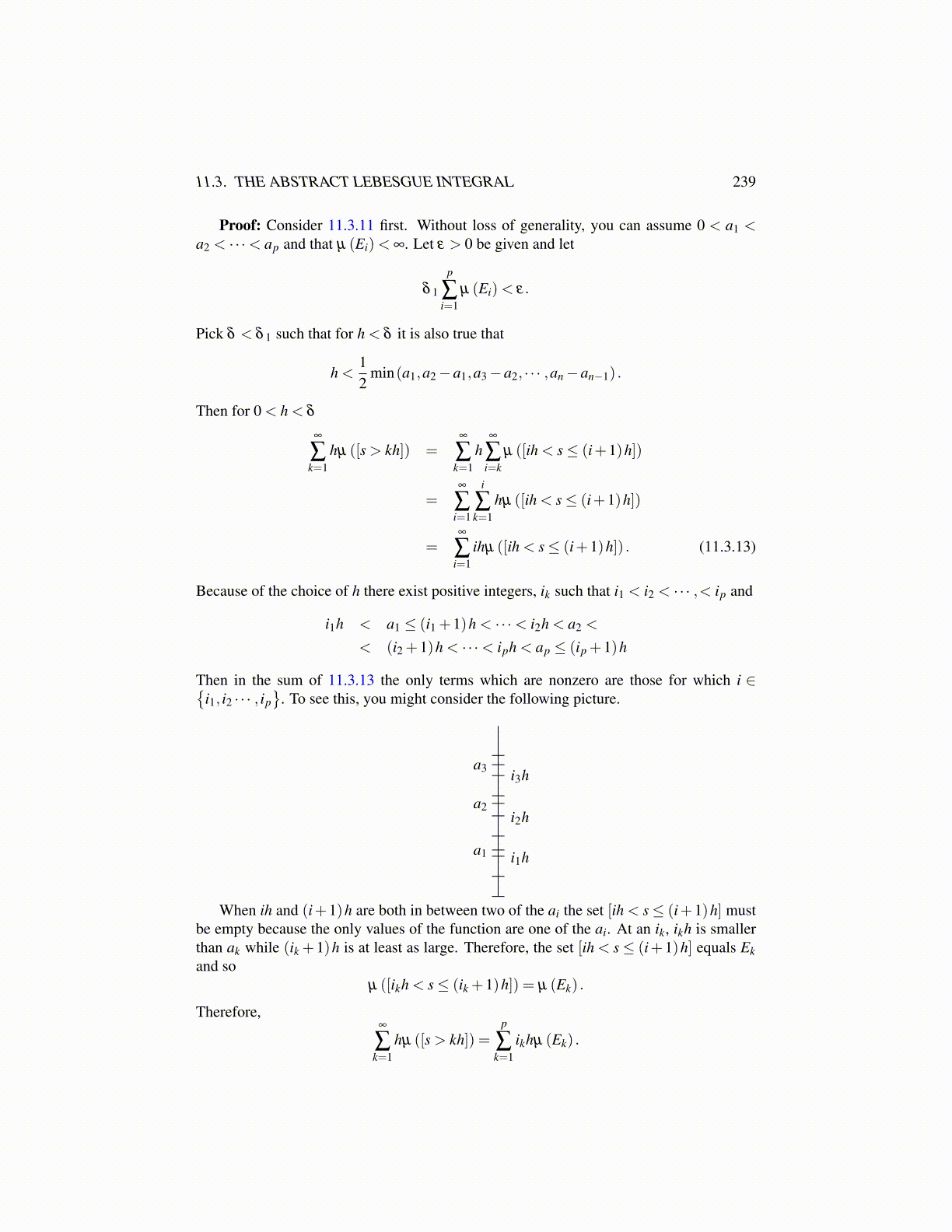
11.3. THE ABSTRACT LEBESGUE INTEGRAL 239
Proof: Consider 11.3.11 first. Without loss of generality, you can assume 0 < a1 <a2 < · · ·< ap and that µ (Ei)< ∞. Let ε > 0 be given and let
δ 1
p
∑i=1
µ (Ei)< ε.
Pick δ < δ 1 such that for h < δ it is also true that
h <12
min(a1,a2−a1,a3−a2, · · · ,an−an−1) .
Then for 0 < h < δ
∞
∑k=1
hµ ([s > kh]) =∞
∑k=1
h∞
∑i=k
µ ([ih < s≤ (i+1)h])
=∞
∑i=1
i
∑k=1
hµ ([ih < s≤ (i+1)h])
=∞
∑i=1
ihµ ([ih < s≤ (i+1)h]) . (11.3.13)
Because of the choice of h there exist positive integers, ik such that i1 < i2 < · · · ,< ip and
i1h < a1 ≤ (i1 +1)h < · · ·< i2h < a2 <
< (i2 +1)h < · · ·< iph < ap ≤ (ip +1)h
Then in the sum of 11.3.13 the only terms which are nonzero are those for which i ∈{i1, i2 · · · , ip
}. To see this, you might consider the following picture.
a1
a2
a3
i1h
i3h
i2h
When ih and (i+1)h are both in between two of the ai the set [ih < s≤ (i+1)h] mustbe empty because the only values of the function are one of the ai. At an ik, ikh is smallerthan ak while (ik +1)h is at least as large. Therefore, the set [ih < s≤ (i+1)h] equals Ekand so
µ ([ikh < s≤ (ik +1)h]) = µ (Ek) .
Therefore,∞
∑k=1
hµ ([s > kh]) =p
∑k=1
ikhµ (Ek) .